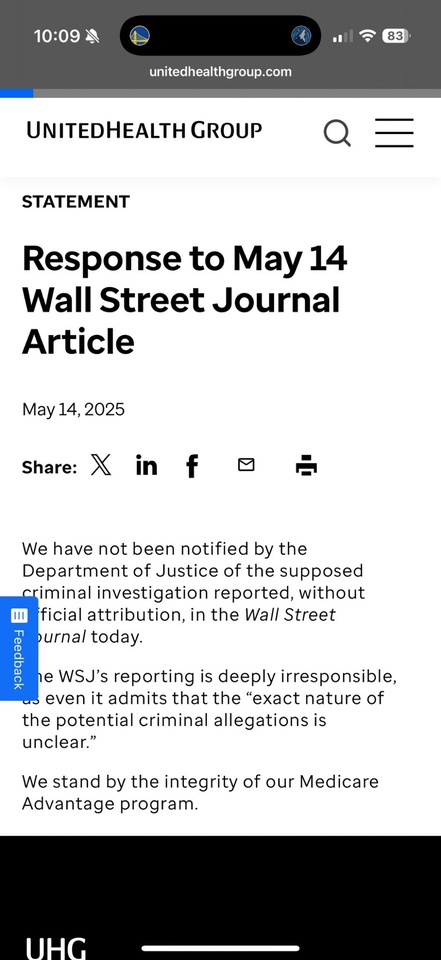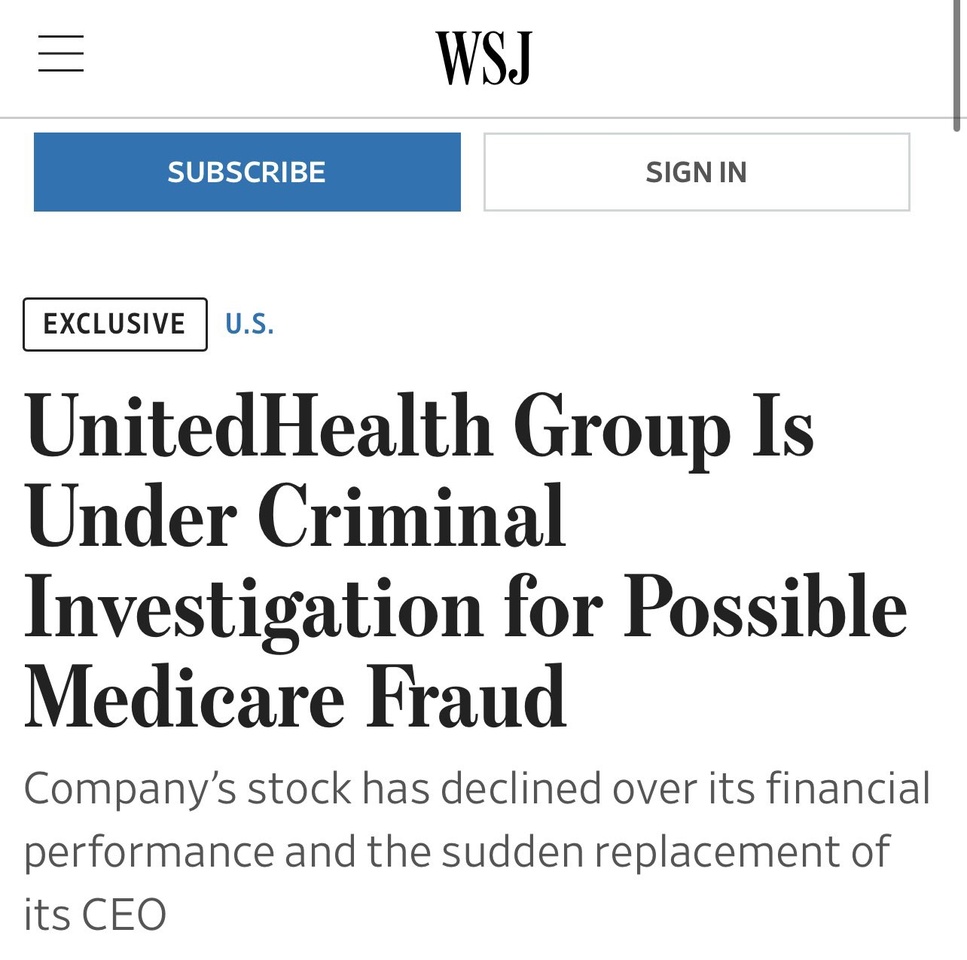$UNH (-0,18%)
$IUSA (+1,06%)
$CSINDU (+0,32%)
$EXI2 (+0,89%)
$XDWH (+0,89%)
The UnitedHealth share price $UNH (-0,18%) falls by over 8 % as the Department of Justice announces an investigation into possible Medicare fraud.
Funnily enough, this news comes right now and the investigation is likely to date back to last year? Let's see what follows today, whether there are any official reports, $UNH (-0,18%) has issued a statement immediately, how do you react to this?
https://www.unitedhealthgroup.com/newsroom/2025/2025-05-14-response-may-14-wsj-article.html
https://stocktwits.com/news-articles/markets/equity/unh-stock-slides-on-report-of-doj-probe-retail-bullish/chitlRYRbN6
The U.S. Justice Department is investigating UnitedHealth Group Inc (UNH) for possible criminal Medicare fraud, the Wall Street Journal reported citing people familiar with the matter.
The investigation is being led by the healthcare-fraud unit of the Justice Department's criminal division and has been ongoing since last summer.
Though specific allegations are unclear, the probe is focused on UnitedHealth's Medicare Advantage business practices, the report said.
The Journal noted that the investigation adds to other government inquiries into the company, including antitrust concerns and a civil review of its Medicare billing practices at its doctors' offices.
On Tuesday, UnitedHealth Group announced that its Chief Executive Officer Andrew Witty stepped down from the position due to personal reasons. Following this, the healthcare company appointed Stephen Hemsley as its new Chief Executive Officer, effective immediately. He was the company's Board chair in 2017.
Additionally, the company announced its decision to suspend its 2025 outlook, citing higher than expected medical expenditures. However, the company expects to return to growth in 2026.

























